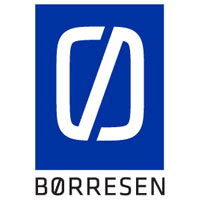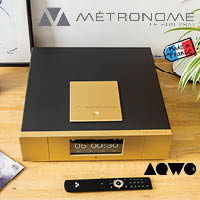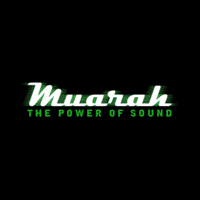Sennheiser PXC 550 Wireless
I’d like to thank Hummingbird Media and Katie Kailus in particular for getting me a set of PXC 550s so quickly. This enabled me to do a shootout of sorts with Master & Dynamic’s new MW65 wireless set and to use the Sennheisers in the ultimate torture test, flying on Air Canada’s Q400 from Victoria to Vancouver sitting between two howling Pratt and Whitney turboprops. They’d give a headache a headache. The puddle jump was the opening flight before the much quieter Airbus A350-900 took us to Munich for High End 2019. I was grateful for the review product and its practicalities for travel.
The PXC 550 Wireless is Sennheiser’s playmaker in the sub $500 active noise cancellation (ANC), over ear headphone market. And the market is filling up. As I mentioned, Master & Dynamic, known for ultra refined headphones, finally mastered the somewhat black art of ANC, enough they felt comfortable releasing the new MW65 ($499). The PXC is priced well below the M&D and equal to models from Sony and Bose. The MSRP is $349.95.
ANC has been dominated by Bose and is engineered to a very high level in their latest headphones, the QC35. To approach their lofty heights, manufacturers have to take ANC seriously. Along with great sound, comfort and value, customers want the very best in connectivity and especially great ANC. With many lifestyle models, some manufacturers get the ANC balance wrong and inhibit the headphones’ sound quality. That is not the case with the excellent PXC 550s.
The headphones are setup in conjunction with the Sennheiser Smart Control app (SSC). It works very well and from it you can access the advanced audio functions Sennheiser offers.
Specifications
Impedance: Active 490 Ω / Passive 46 Ω
Frequency response (Headphones): 17 - 23,000 Hz
Bluetooth 4.2
Headset Profile (HSP) v.1.2 / Handsfree Profile (HFP) v.1.6 / Advanced Audio Distribution Profile (A2DP) v.1.3 / Device ID Profile (DIP) v.1.3
Sound pressure level (SPL): 110 dB
THD, total harmonic distortion: <0.5% (1kH, 100dB)
Transducer principle: Dynamic closed
Charging time: 3 hours (full charge)
Pick-up pattern: 3-Mic Beamforming Array
Operating time: Up to 30 hours
Weight w/o cable: 227g
Sound
I settled on the ‘Movie’ setting in the equalization on the SSC app. It gave me the open, clean sound I like from headphones where the music seems under the greatest scrutiny. The other settings (Club, Speech or Custom) are varied enough to offer every purchaser their favourite sound design—and these are switchable via a small button on the right earpiece.
Many of the headphone functions are ingeniously accessed via touching/sliding/tapping the right earpiece. Phone calls and Google Assistant support both functioned well. Phone calls, especially, had a pleasant, open character to the sound. Ambient filtering was first class. Many times, phone call support is a weak point with this type of headphone.
The headphones are turned on/off by turning the earpieces from flat to standard ear position. Battery life was as advertised.
The ANC worked extremely well both on the street and in the air. The headphones are very comfortable for long haul flights. And every type of cable/adaptor is included to hook up on any type of aircraft. The ANC was especially effective on the Q400. Although only a ten minute flight, the engine sound can be very annoying. Listening to Coldplay was a pleasure, with only the slightest drone in the background. Torture test: pass!
Connectivity was quick and easy, too. Not forgetting the app.
Even though the level of ANC is adjustable, I was ‘full on’ for the review.
Listening to choirs and vocal soloists was a delight. The PXCs deliver very refined, detailed sound that adds scrutiny but not an ‘X-ray’ experience. In this respect, it easily betters the ‘beige’ sound offered by Bose. And if the ANC is not quite that of the QC35, the sound is certainly better.
During my ANC shootout, all the competitors got the tech right—it was well engineered and implemented so the musicality did not suffer. The Sennheisers, built by a company who knows how to produce the very best in headphone sound, sounded great on rock, jazz and even hushed classical pieces. With very fine ANC, you’ll enjoy well balanced, dynamic, refined sound in a quiet setting.
My favourite orchestral spectacular of the month, and tested on all the earphones, was Dudamel’s LA Phil/DG John Williams Olympic Fanfare. This spectacular piece tests earphones with dynamic power and for timbral accuracy (the high brass can get a little glassy). The bass is thwacakable, too! The Sennheisers easily beat out the Bose QC35s for orchestral refinement and bass extension and I also preferred them to Sony’s idea of timbral accuracy. Different drivers for different folks.
Summary
So, the PXC 550 is on or above par with the similarly priced Bose and Sony models. But, I’d certainly go Sennheiser for the features, comfort and sound quality. However, at a $150 premium, the new Master & Dynamic MW65s offer equally good ANC, but are made with superior materials and boast their 40mm Beryllium drivers which sound divine. As such, if the $350 price point is attractive to you, an easy choice. But, if you have the extra cash, do try the M&Ws.
Further information: Sennheiser


























